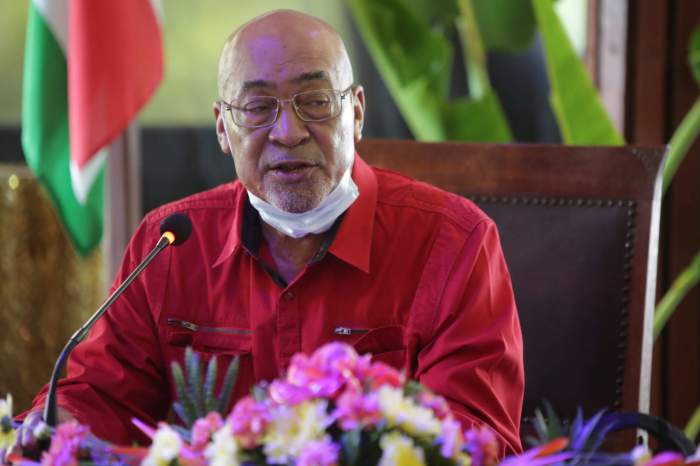By Stephanie Nebehay and Se Young Lee
GENEVA/BEIJING (Reuters) – Thousands of passengers and crew on two cruise ships in Asian waters were placed in quarantine for China’s coronavirus on Wednesday as airlines, carmakers and other global companies counted the cost of the fast-spreading outbreak.
Hundreds of experts will gather in Geneva next week, on Feb. 11-12, in an attempt to find a way to fight back against the outbreak by speeding research into drugs and vaccines, the World Health Organization (WHO) said. A multinational WHO-led team would go to China “very soon”, it added.
It stressed no known effective treatment existed to combat the virus, dismissing various reports of “drug breakthroughs”.
China said another 65 people had died in the previous 24 hours, in the highest daily total yet, taking the overall toll on the mainland to 490, most in and around the locked-down central city of Wuhan, where the new virus emerged late last year.
There have been two deaths outside mainland China – in the Philippines and Hong Kong – both following visits to Wuhan.
The virus had disrupted air travel, with more than two dozen airlines suspending or restricting flights to China and several countries, including the United States, banning the entry of anyone who has been in China over the previous two weeks.
Hong Kong said all visitors from mainland China would be quarantined for two weeks, while Taiwan banned the entry of mainland residents from Thursday.
The disruption spread to cruise ships this week, with about 3,700 people facing at least two weeks cut off aboard a liner anchored off Japan after health officials confirmed 10 passengers had tested positive for the virus.
Passengers on the Diamond Princess posted pictures online of officials in masks and gowns conducting health checks and an empty deck.
“This is not a good situation,” British passenger David Abel said in a video shot in his cabin and posted to Facebook.
In Hong Kong, 3,600 passengers and crew were confined to their ship docked in the city for tests after three people on board had tested positive earlier.
Hong Kong’s Cathay Pacific Airways <0293.HK> asked its 27,000 employees to take three weeks of unpaid leave, saying conditions were as grave now as during the 2009 financial crisis.
American Airlines Group
About half of the air cargo carried globally is in the belly of passenger jets rather than dedicated freighters.
FACTORY DISRUPTION
Nearly $700 billion was wiped off mainland Chinese stocks on Monday with many factories shut, cities cut off and travel links constricted, fuelling worries about global supply chains. Asian stocks steadied on Wednesday.
Hyundai Motor <005380.KS> will suspend production in South Korea because of a disruption to the supply of parts, it said, becoming the first major carmaker to do so outside of China.
Global carmakers have already extended factory closures in China in line with government guidelines. These include Hyundai, Tesla
Planemaker Airbus Taiwan’s Foxconn <2317.TW>, which makes phones for global vendors including Apple German sportswear company Adidas White House economic adviser Larry Kudlow said the epidemic would delay a surge in U.S. exports to China expected from a Phase 1 trade deal set to take effect this month.
European Central Bank President Christine Lagarde said the virus was adding to economic doubts.
“While the threat of a trade war between the United States and China appears to have receded, the coronavirus adds a new layer of uncertainty,” she said in Paris.
HUMAN-TO-HUMAN SPREAD
Evidence of human-to-human spread outside China surfaced after an international business gathering in Singapore in January was linked to virus cases reported in Malaysia and South Korea, but authorities did not comment on its nature or the industry involved. Singapore – one of the worst hit countries outside China in the 2003 outbreak of Severe Acute Respiratory Syndrome (SARS) – has reported 28 cases of the new coronavirus.
Across mainland China, there were a total of 24,363 coronavirus infections, according to the WHO. Nearly 230 cases have been reported in some 27 countries and regions outside mainland China, a Reuters tally based on official statements shows. “The relatively small number of cases outside China gives us a window of opportunity to prevent this outbreak from becoming a broader global crisis,” WHO director-general Tedros Adhanom Ghebreyesus told a news conference. The WHO has declared the flu-like virus a global emergency and says face masks are important in curbing transmission if someone is showing symptoms. Pregnant women may be able to pass it to their unborn children, according to Chinese state media. Asked about various reports of “drug breakthroughs”, WHO spokesman Tarik Jasarevic said: “There are no known effective therapeutics against this 2019-nCoV.”
Russia said it would take between eight and 10 months to develop a vaccine, Interfax reported. Scores of Russians began two weeks of quarantine in Siberia on Wednesday after being flown from Wuhan. Beijing has criticised as an overreaction U.S. travel curbs that bar foreign nationals who have visited China. About 350 Americans, the latest to be evacuated from Wuhan, landed in California on Wednesday. For more on the Coronavirus outbreak, click here. https://graphics.reuters.com/CHINA-HEALTH/0100B59Y39P/index.html
GRAPHIC: Tracking the novel coronavirus – https://tmsnrt.rs/3aIRuz7
GRAPHIC: Comparing new coronavirus to SARS and MERS – https://tmsnrt.rs/2GK6YVK
(Reporting by Lusha Zhang, Ryan Woo, Roxanne Liu and Se Young Lee in Beijing, Yilei Sun and Winni Zhou in Shanghai, Tom Westbrook in Singapore, Jamie Freed in Sydney, Matthew Tostevin in Bangkok, Stephanie Nebehay in Geneva, Hong Kong and Taipei newsrooms, David Lawder, Andrea Shalal, Susan Heavey and Makini Brice in Washington, Writing by Robert Birsel and Nick Macfie; Editing by Alex Richardson and Pravin Char)






















